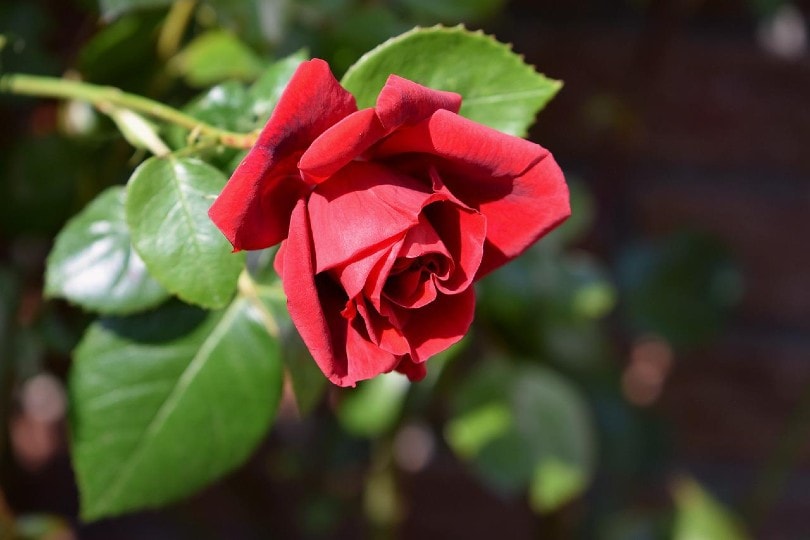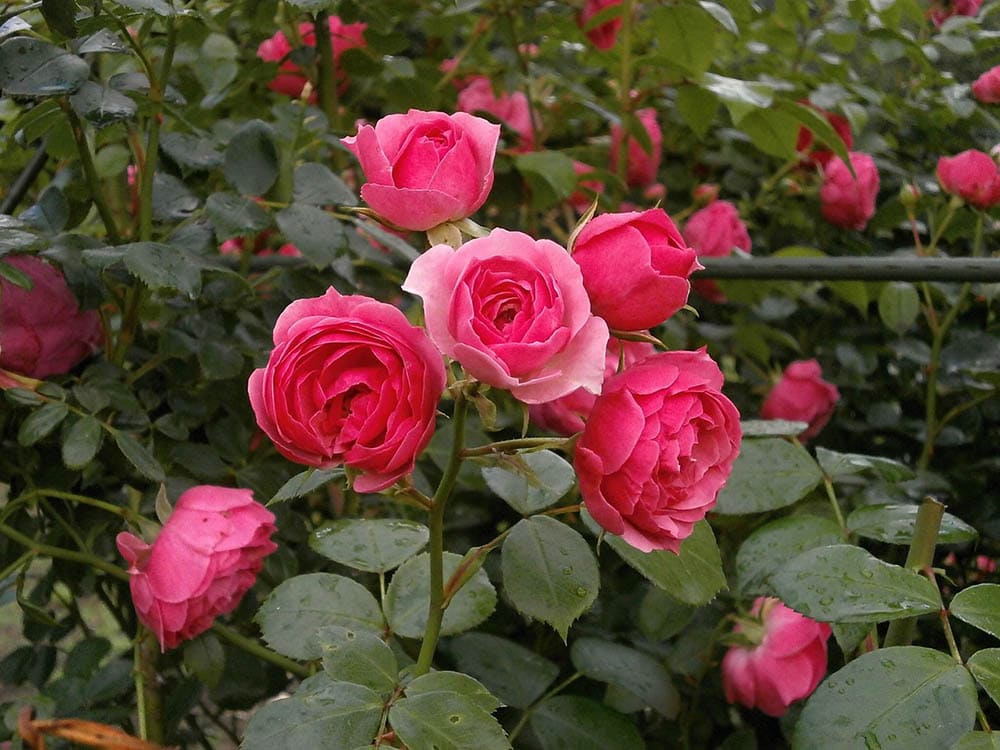Can You Grow Roses Indoors? Tips, Tricks & How-to Guide
-
Shea Cummings
- Last updated:

Rose gardens are among the most beautiful and fragrant gardens around, but they don’t have to be limited to seasonal enjoyment. If you give them the right conditions, you can enjoy these elegant flowers all year round.
They aren’t the most challenging plant to grow indoors, but they are slightly pickier regarding light, moisture, and temperature. If you can provide for their needs, growing roses indoors is rewarding. Below, we will give you a few steps to growing roses indoors, and then we’ll finish off with a couple of helpful tips for your success.
The 3 Steps to Grow Roses Indoors
1. Choose the Right Rose Variety
Any plant or flower can be grown indoors with the right tools or equipment. However, not all rose cultivars will do well. One of the most common roses chosen for indoor growing is the miniature rose. This is because they are a hardy variety, and they don’t require as much space as their full-size counterparts.
If you want to grow a regular rose, the steps below are still applicable for its care. However, you will need more space compared to the miniature rose, which is another reason that most people opt for the minis.
Another great indoor rose is the climbing rose. This type is ideal for someone with extra vertical space instead of floor space. You’ll need a trellis or something similar for the roses to grow on.

2. Prepare the Correct Environment
The environment is the most significant factor in how well a rose will grow indoors. Roses are particular about the amount of light they receive, the soil quality, and humidity levels. Depending on the variety you choose, space will also be an issue.
Most roses require around 6 hours of direct sunlight to flourish. If you have a south or west-facing window, this should give your rose adequate light throughout the day. You’ll have to use a planting light to provide artificial light if you don’t.
As for the soil quality and humidity levels, one of the keys is starting with high-quality potting soil. This soil type is enriched with extra nutrients to help your roses thrive. Humidity is essential to keep pests such as spider mites away from your roses. If your house is dry, using a humidity tray can help alleviate that.
A humidity tray comes in different forms. One common type is a tray of pebbles and water. You set your pot on it, and as the water evaporates, it causes the humidity around the plant to increase.
3. Care for the Rose
It’s important to pay extra attention to your indoor roses, especially early on. Until they are well established, a rose is prone to wilting and dying without a lot of grace. Ensuring the temperature stays consistent will help your roses thrive; between 70–75 degrees during the day and down to 60 at night is adequate.
Also, watering is a delicate balance because you don’t want to over-water the rose. However, if it is allowed to dry out, it will die rapidly. A good rule of thumb with watering is if the soil is still damp, don’t water it. If the top inch or so of the soil is drying out, give it a drink.
Another way to care for your rose long-term is to prune it. Removing dead blooms encourages the plant to continue growing. With the proper care, your rose will continue blooming year after year.
Pests and Diseases
Just because the plants are indoors doesn’t mean they are immune to pests or diseases. For example, a miniature rose is prone to fungal diseases like black spot or powdery mildew. If you’re planting multiple rose bushes indoors, keep them a few feet apart. This will improve the airflow around them and help combat disease.
There are rose-specific products on the market to help keep your roses healthy. Not only do they help treat infections, but some products will help prevent infection or infestation too. Even if you’re treating the rose bush and there are infected parts on the plant, remove those pieces from the plant as this will help keep the infection from spreading. And if you find insect damage, make sure you treat the bush with insecticide so that the pests don’t destroy the whole plant.

Moving Roses Outside
If you’ve planted roses inside during the winter, you can move them outside once the warmer months roll in. When you decide to do this, make sure you do it gradually—sudden changes in a rose’s environment can shock its system and kill it.
The best way to transition them outside is by putting them out in short increments, increasing their time outside each day. Once you’ve acclimatized them, you can either transplant them or keep them in the pot. Then you can enjoy them inside once the weather gets cold again.
Final Thoughts
There’s no denying that there are easier flowers to grow indoors. But if you’re an experienced indoor gardener, roses won’t pose much of an issue for you to grow. Imagine the fragrant oasis that you could create with roses! Even if you prefer to enjoy them outside in the garden, growing them inside during the winter months will allow you to appreciate them all year round, no matter what the weather is. Plus, you can always transplant them outside during the spring.
- You May Also Like: Can You Grow Lavender Indoors? Tips, Tricks, and How to Guide
Featured Image Credit: cocoparisienne, Pixabay
Contents

